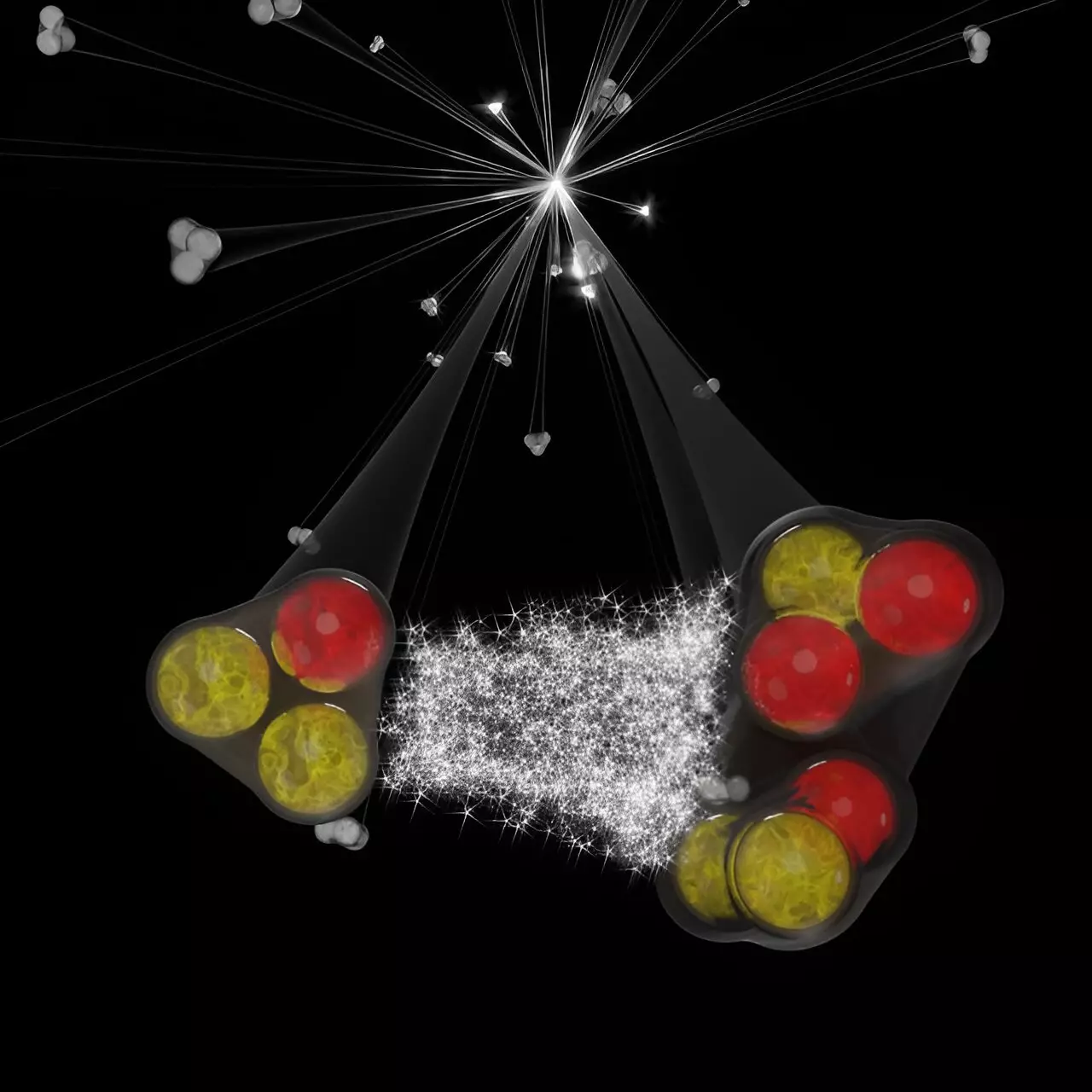The study of nuclear forces has long been a fundamental aspect of physics, particularly in the understanding of the interactions that govern atomic nuclei and their constituents. Traditionally, interactions are perceived as forces between pairs of entities, but the intricate world of three-body systems reveals layers of complexity that challenge this simplistic view. Recent contributions from the ALICE collaboration, detailed in Physical Review X, delve into kaon-deuteron and proton-deuteron systems, making significant strides toward unraveling these complexities within nuclear physics.
In the realm of nuclear physics, the challenge of describing strongly interacting three-hadron systems is paramount. This subject is not just an academic pursuit; it intertwines with numerous phenomena, including the structure of atomic nuclei, the mysteries of high-density nuclear matter, and the enigmatic cores of neutron stars. As nuclear physicists grapple with these multifaceted interactions, the need for precise studies becomes increasingly evident. The findings of the ALICE collaboration not only spotlight kaon and deuteron correlations but also pave the way for enhanced insights into three-body nuclear forces that are often elusive.
High-energy proton-proton collisions at the Large Hadron Collider (LHC) provide a fertile ground for investigating particle interactions at femtometer scales—distances where quantum effects are pronounced. When produced nearly simultaneously, these particles can exhibit fascinating behaviors influenced by quantum statistics, the Coulomb force, and strong interactions. The possibility of two produced particles influencing each other before they radiate outward constitutes a fundamental question in modern nuclear physics. In this context, kaon-deuteron and proton-deuteron correlations emerge as vital indicators of the underlying dynamics at play.
At the heart of ALICE’s recent analyses lies the correlation function, a powerful mathematical tool designed to compare the likelihood of encountering two particles within particular momentum ranges against a backdrop of uncorrelated momentum distributions. Values deviating from unity in the correlation function signal the presence of interactions. Specifically, values exceeding one point to attractive forces, while those below indicate repulsion. The ALICE collaboration’s observations revealed that when examining kaon-deuteron and proton-deuteron systems, the correlation functions at low relative transverse momenta were consistently below one, suggesting a repulsive interaction amongst the three-body constituents.
The correlation measurements provided tantalizing glimpses into the behavior of these systems. Observations indicated that the distances at which these deuterons and their accompanying particles are generated fall around two femtometers, underscoring the short-range nature of these interactions. The analysis of kaon-deuteron correlations proved particularly revealing; a two-body effective model, which includes both Coulombic and strong interactions, was adequate to capture the key dynamics at play. Conversely, when addressing proton-deuteron correlations, this two-body approach faltered, necessitating a more nuanced three-body calculation that considered deuteron structure explicitly.
The implications of the ALICE collaboration’s findings extend far beyond the immediate measurements. They introduce a novel methodology for studying short-range three-body systems at the LHC, significantly enhancing our understanding of nuclear forces. This could herald a new era in nuclear research, where similar techniques could be applied to explore three-baryon systems in the strange and charm sectors—domains previously deemed experimentally inaccessible.
The recent advancements presented by the ALICE collaboration signify a pivotal moment in the quest to decode the complexities of nuclear forces amid three-body systems. The research not only expands our understanding of fundamental interactions but also sets the stage for future inquiries that could reshape our grasp of nuclear physics. By harnessing innovative methods to analyze correlations within high-energy collisions, physicists are steadily piecing together the intricate puzzle of how multiple particles interact, promising a richer understanding of the very building blocks of matter. The road ahead is ripe with potential, inviting continued exploration and discovery within the expansive universe of nuclear interactions.

